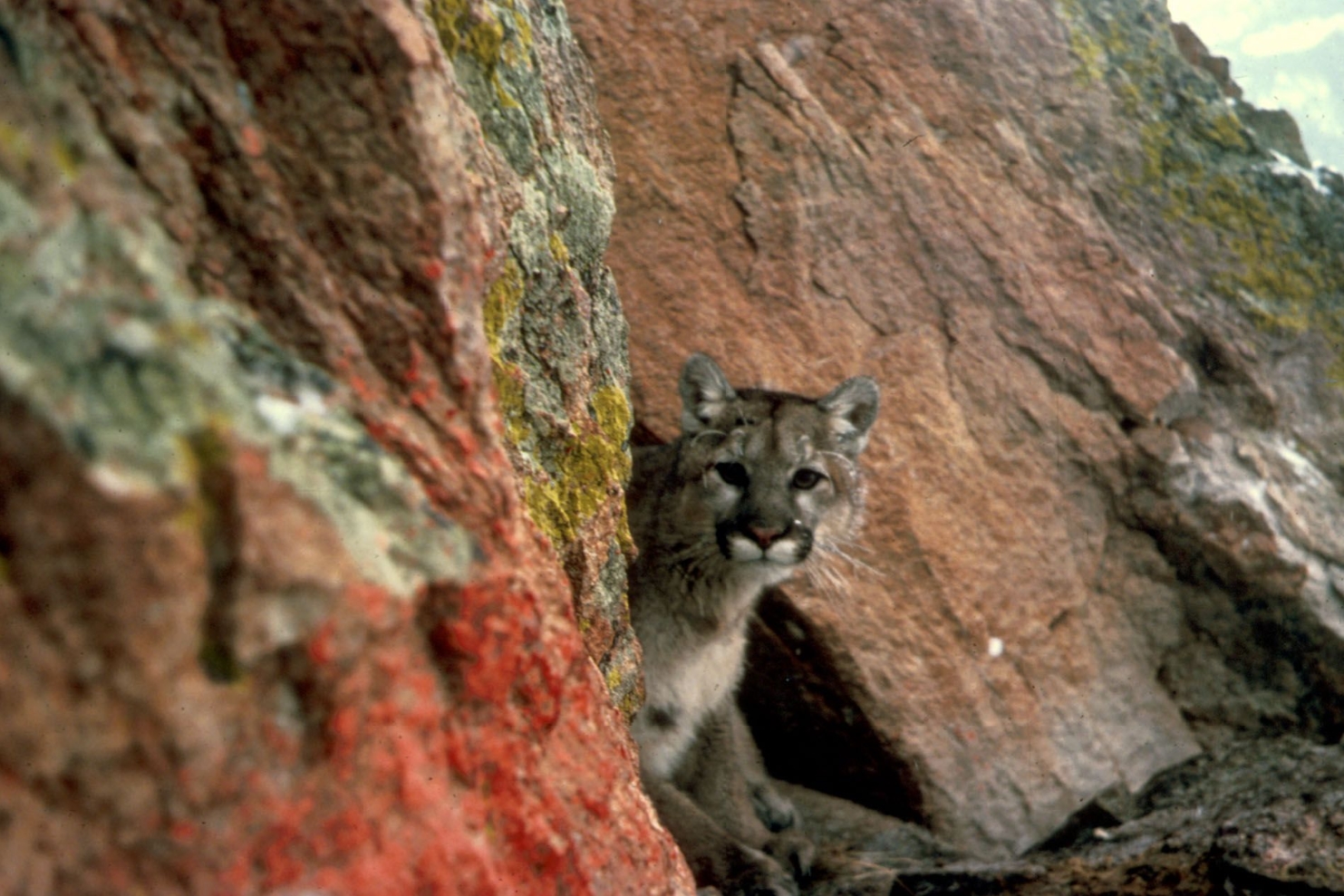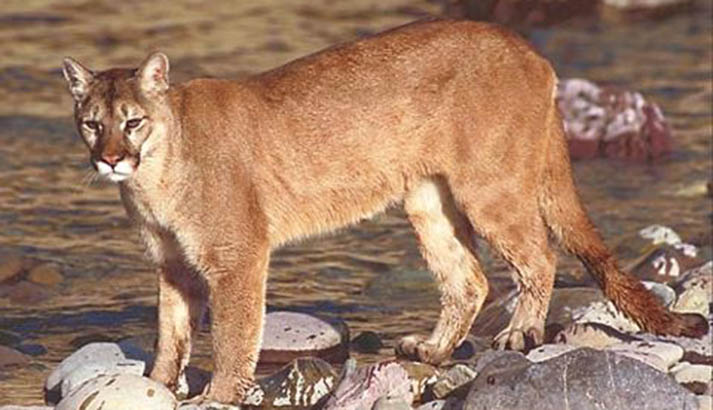
Felis concolor
Courtesy US FWS
Larry Moats, Photographer
 Cougar or Mountain Lion
Cougar or Mountain Lion
Felis concolor
Courtesy US FWS
 Yellow-billed Cuckoo
Yellow-billed Cuckoo
Coccyzus americannus
Courtesy & © Eric Peterson, PhotographerWhen we think about World Migratory Bird Day, we often think about providing for their needs with water, bird feeders, and native plants, and hopefully we are keeping cats indoors and taking steps to prevent the lethal danger of window-collisions. We may even think about the importance of sponge city landscaping and beaver dams to slow and store snowmelt runoff, but it is the Mountain Lion which has the unique distinction of being a keystone provider ranked as the top vertebrate feeder of birds – in fact they “feed more mammals and birds than any other predator, increasing the number of animal interactions – the links in food webs so essential to maintaining ecosystem resilience. And they are ecosystem engineers on top of this as well.”
(1) Researchers have found that large carcasses create essential habitat for carrion-dependent beetles – these are not just food for beetles, but the very places beetles spend their lives, hiding from predators, seeking mates, raising young, and morphing from larvae [lahr-vee] into adult forms which disperse in search of the next carcass to begin the cycle all over again. (2)The food web gets to the very heart of bird migration, and the very real challenge of ensuring a future in which people and birds can thrive with dwindling habitat resources essential for survival.
Consider the Yellow-billed Cuckoo [koo-koo], one of the World Migratory Bird Day Ambassador species, to highlight the importance of water and riparian habitat for birds. A long-distance migrant, the Yellow-billed Cuckoo breeds in the United States, Mexico, and the Caribbean, and migrates through Central America to reach its wintering grounds in South America. It seeks wooded habitats with water nearby, where it feasts mostly on insects, especially caterpillars, during the spring and summer, transitioning to a more fruit- and seed-heavy diet in the fall and winter.
The Yellow-billed Cuckoo was selected for this year’s World Migratory Bird Day campaign to help shed light on the decline of riparian habitats along our rivers, streams, and freshwater lakes, particularly in the American West, where species that rely on these areas are experiencing population declines and are in possible danger of extirpation from some states. These western riparian species include Summer Tanager, Yellow Warbler, Willow Flycatcher, Yellow-breasted Chat, and Yellow-billed Cuckoo. Loss of native forest to farmland, housing, and other development has led to significant population declines in these species, especially in the case of the Cuckoo, which relies on large patches of streamside forest for breeding.
The Yellow-billed Cuckoo is becoming an increasingly rare bird in the American West. We need to increase awareness and encourage decision makers to explore ways to protect riparian areas, remove invasive species, restore habitat, and conserve water. World Migratory Bird Day 2023 aims to contribute to these efforts by highlighting the importance of water conservation and habitat management for migratory birds, and by providing resources to help promote these important issues. Bird Day is every day, but especially mid-May and mid-October. Learn more at migratorybirdday.org, and learn more about how to conserve water for sustaining bird life!
I’m Hilary Shughart with the Bridgerland Audubon Society, and I am Wild About Utah!
Credits:
Images: Mountain Lion images Courtesy US Fish & Wildlife Service, Larry Moats, Photographer
Yellow-beaked Cuckoo, Courtesy & Copyright, Eric Peterson, VikingPhotographyUtah
Featured Audio: Courtesy & Copyright © Kevin Colver, https://wildstore.wildsanctuary.com/collections/special-collections/kevin-colver
Text: Hilary Shughart, President, Bridgerland Audubon Society
Additional Reading: Hilary Shughart and Lyle Bingham, https://bridgerlandaudubon.org/
Additional Reading
WildAboutUtah pieces by Hilary Shughart, https://wildaboututah.org/author/hilary-shughart/
“In research recently published in the prestigious journal, Oecologia, we show that mountain lions are ecosystem engineers that create essential habitat for carrion-dependent beetles. It is the first research to show that an apex predator plays the role of engineer. In collaboration with graduate researcher, Josh Barry, and Dr. Melissa Grigione at Pace University, we collected and identified 24, 209 beetles across 18 sites, representing 215 unique beetle species. The carcasses abandoned by mountain lions were not just food for beetles, but the very places beetles spent their lives, hiding from predators, seeking mates, raising young, and morphing from larvae into adult forms that dispersed in search of the next carcass to begin the cycle all over again.”
Barry, J.M., Elbroch, L.M., Aiello-Lammens, M.E. et al. Pumas as ecosystem engineers: ungulate carcasses support beetle assemblages in the Greater Yellowstone Ecosystem. Oecologia 189, 577–586 (2019). https://doi.org/10.1007/s00442-018-4315-z
Mountain Lions as Ecosystem Engineers, MarkElbroch.com, , [Accessed April 29, 2023]
Mountain Lion Conservation, MarkElbroch.com, , [Accessed April 29, 2023]
EOC 206: Mark’s Cougar Conundrum, Eyes on Conservation Podcast, https://podcasts.apple.com/us/podcast/the-eyes-on-conservation-podcast/id916341600 [Accessed April 30, 2023]
Elbroch, Mark, The Cougar Conundrum, Sharing the World with a Successful Predator,, Island Press, August 2020, https://islandpress.org/books/cougar-conundrum [Accessed April 30, 2023]
Panthera USA, https://www.panthera.org/ [Accessed April 30, 2023]
Mark Elbroch, Ph.D., Panthera USA, https://panthera.org/mark-elbroch-phd [Accessed April 30, 2023]
MarkElbroch.com, [Accessed April 29, 2023]
Wiggins, D. (2005, March 25). Yellow-billed Cuckoo (Coccyzus americanus): a technical conservation assessment.
[Online]. USDA Forest Service, Rocky Mountain Region. Available: https://www.fs.usda.gov/Internet/FSE_DOCUMENTS/stelprdb5182002.pdf [Apr 30, 2023].
Yellow-billed Cuckoo Coccyzus americanus, All About Birds, Cornell Lab of Ornithology, Cornell University, https://www.allaboutbirds.org/guide/Yellow-billed_Cuckoo/
May 13 & October 14, World Migratory Bird Day 2023, WATER, UNEP/CMS Secretariat and UNEP/AEWA Secretariat, https://www.worldmigratorybirdday.org/
